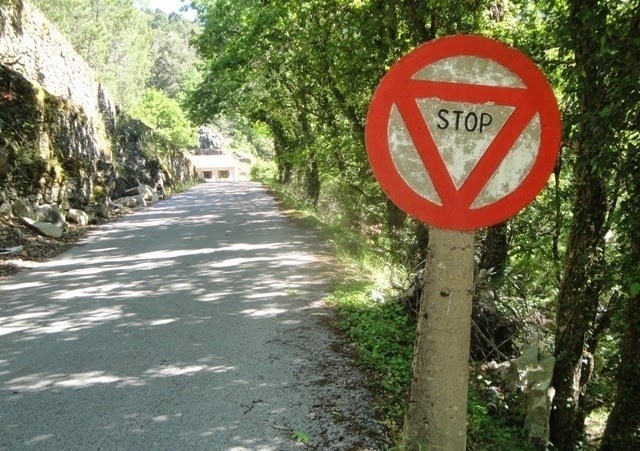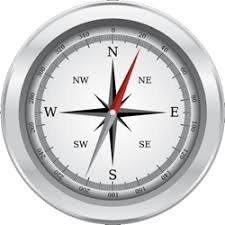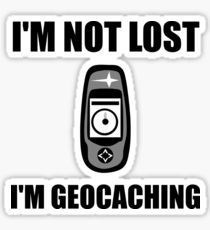OCTÓGONO VERMELHO

O sinal rodoviário Stop celebra este ano o seu sexagésimo oitavo aniversário na forma como o conhecemos atualmente: uma placa metálica de forma octogonal pintada de cor vermelha, sob a qual estão escritas, a branco, as letras STOP. Foi em 1954, nos Estados Unidos, que o sinal que obriga os automobilistas a pararem em cruzamentos e entroncamentos adquiriu as feições que hoje lhe conhecemos – e rapidamente se tornou padrão em todo o mundo.


O sinal Stop nem sempre teve a estranha forma octogonal. Aliás, nem sempre existiu. Ele só se tornou necessário com o aumento da utilização automóvel, no princípio do século XX. As ruas eram caóticas: os automóveis, ainda escassos, partilhavam as estradas com peões, carroças, coches, liteiras e outros veículos. Antes mesmo da existência dos carros a motor, a circulação já não era fácil, nomeadamente em cidades como Lisboa. Na capital portuguesa, as contendas entre cocheiros eram de tal forma frequentes que o próprio rei, D. Pedro II, se viu, em 1686, forçado a adotar medidas para regular as cedências de passagem.
A primeira proposta de colocação de sinais Stop em alguns pontos das estradas já depois do aparecimento da circulação automóvel foi feita em 1900, por William Phelps Eno, um empresário norte-americano que defendia a “necessidade urgente” de tal sinalização. A proposta de Eno – que apesar de ter sido responsável pela introdução de diversas medidas de segurança rodoviária, nunca conduziu – só foi posta em prática em 1915, quando, em Detroit, no estado norte-americano de Michigan, surgiu o primeiro Stop da história. Era quadrado e branco.
De onde vem, afinal, a forma octogonal? Ela teve origem em 1923, também nos Estados Unidos, na Mississippi Valley Association of State Highway Departments, que propôs a icónica forma com base numa ideia muito pouco intuitiva: quanto mais lados um sinal de trânsito tiver, maior o perigo que representa. Assim, os sinais redondos, que têm um número infinito de lados, representariam as situações mais perigosas – algo que não tem correspondência no nosso Código da Estrada, uma vez que os sinais redondos em Portugal se aplicam a situações de proibição ou obrigatoriedade. Os sinais octogonais seriam para as segundas situações mais perigosas, como o atravessamento de cruzamentos ou entroncamentos.
Em Portugal, os sinais de Stop assumiram, durante muito tempo, a forma redonda, como um sinal de proibição, dentro do qual havia um triângulo invertido, sinal de perigo, inscrevendo-se aí a palavra Stop.

E a cor vermelha desse sinal octogonal de Stop, que nos Estados Unidos era branco ou amarelo, como apareceu? Simples: “O vermelho sempre esteve associado [à ideia de] parar”, explica Gene Hawkins, engenheiro civil do Texas ao New York Times. “O problema é que não era possível produzir um material refletor em vermelho que durasse. [Os materiais] não eram duráveis até que surgiu um novo produto no fim dos anos 40, início dos anos 50”, diz. Daí que só em 1954 se tenha começado a usar o sinal que hoje se encontra pelas estradas do mundo inteiro.


Esta cache foi criada no âmbito da primeira formação de Geocaching para professores, curso “Geocaching – Uma ferramenta educativa”, realizada na Escola Secundária de Lagoa.

RED OCTOGON
The stop road sign celebrates this year its sixty-eighth anniversary in the way we know it today: a metal plate with octagonal shape painted red, under which are written, in white, the letters STOP. It was in 1954 in the United States that the sign that forced motorists to stop at intersections and junctions acquired the features that we know today - and quickly became standard throughout the world.


The Stop sign did not always have the odd octagonal shape. In fact, it did not always exist. It only became necessary with increasing automobile use in the early twentieth century. The streets were chaotic: cars, still scarce, shared roads with pedestrians, carts, cars, litters, and other vehicles. Even before the existence of motor cars, circulation was no longer easy, especially in cities like Lisbon. In the Portuguese capital, the quarrels between carriages were so frequent that the king himself, D. Pedro II, was forced, in 1686, to take measures to regulate the yields on the way.
The first proposal to place Stop signs at some points on the roads after the outbreak of motorway traffic was made in 1900 by William Phelps Eno, an American businessman who defended the "urgent need" for such signs. Eno's proposal - which despite having been responsible for the introduction of various road safety measures, never led - was only put into practice in 1915, when, in Detroit, the state of Michigan, the first Stop of history . It was square and white.
Where does the octagonal shape come from? It originated in 1923, also in the United States, at the Mississippi Valley Association of State Highway Departments, which proposed the iconic form based on a very unintuitive idea: the more sides a traffic signal has, the greater danger it poses. Thus, round signs, which have an infinite number of sides, would represent the most dangerous situations - something that does not correspond in our Road Code, since round signs in Portugal apply to situations of prohibition or compulsion. The octagonal signs would be for the second most dangerous situations, like the crossing of crossings or junctions.
In Portugal, the signs of Stop have long assumed the round shape, as a sign of prohibition, within which there was an inverted triangle, a danger sign, with the word Stop.

And the red color of that octagonal Stop sign, which in the United States was white or yellow, how did it appear? Simple: "Red has always been associated [with the idea of] stopping," explains Gene Hawkins, a Texas civil engineer for the New York Times. "The problem is that it was not possible to produce a red reflecting material that would last. [The materials] were not durable until a new product emerged in the late 1940s, early 1950s, "he says. Hence, it was only in 1954 that the signal that today is found on the roads of the whole world began to be used.


This cache was created under the first Geocaching training for teachers, course "Geocaching - An educational tool", held at Lagoa Secondary School.